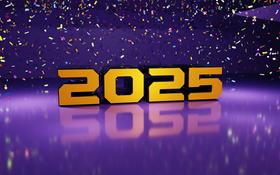For the 2025-26 school year, there are 5 public schools serving 1,487 students in 53555, WI.
The top ranked public schools in 53555, WI are Lodi High School, Lodi Middle School and Ouisconsing School Of Collaboration. Overall testing rank is based on a school's combined math and reading proficiency test score ranking.
Public schools in zipcode 53555 have an average math proficiency score of 49% (versus the Wisconsin public school average of 40%), and reading proficiency score of 38% (versus the 38% statewide average). Schools in 53555, WI have an average ranking of 7/10, which is in the top 50% of Wisconsin public schools.
Minority enrollment is 10% of the student body (majority Hispanic), which is less than the Wisconsin public school average of 34% (majority Hispanic and Black).
Best 53555, WI Public Schools (2025-26)
School
(Math and Reading Proficiency)
(Math and Reading Proficiency)
Location
Quick Facts
Rank: #11.
Lodi High School
(Math: 40-44% | Reading: 50-54%)
Rank:
Rank:
8/
Top 30%10
1100 Sauk St
Lodi, WI 53555
(608) 592-3853
Lodi, WI 53555
(608) 592-3853
Gr: 9-12 | 451 students Student-teacher ratio: 12:1 Minority enrollment: 10%
Rank: #22.
Lodi Middle School
(Math: 53% | Reading: 39%)
Rank:
Rank:
7/
Top 50%10
900 Sauk St
Lodi, WI 53555
(608) 592-3854
Lodi, WI 53555
(608) 592-3854
Gr: 6-8 | 326 students Student-teacher ratio: 12:1 Minority enrollment: 9%
Rank: #33.
Ouisconsing School Of Collaboration
Charter School
(Math: 50-54% | Reading: 30-34%)
Rank:
Rank:
6/
Top 50%10
101 School St
Lodi, WI 53555
(608) 592-3842
Lodi, WI 53555
(608) 592-3842
Gr: 3-5 | 75 students Student-teacher ratio: 13:1 Minority enrollment: 13%
Rank: #44.
Lodi Elementary School
(Math: 45% | Reading: 32%)
Rank:
Rank:
5/
Bottom 50%10
101 School St
Lodi, WI 53555
(608) 592-3842
Lodi, WI 53555
(608) 592-3842
Gr: 3-5 | 239 students Student-teacher ratio: 13:1 Minority enrollment: 12%
Rank: n/an/a
1307 Sauk St
Lodi, WI 53555
(608) 592-3855
Lodi, WI 53555
(608) 592-3855
Gr: PK-2 | 396 students Student-teacher ratio: 17:1 Minority enrollment: 8%
53555, Wisconsin Public Schools (Closed)
School
Location
Quick Facts
Gibraltar Charter School (Closed 2015)
Charter School
1100 Sauk St
Lodi, WI 53555
(608) 592-3853
Lodi, WI 53555
(608) 592-3853
Gr: 9-10 | 5 students Student-teacher ratio: 5:1
103 Pleasant St
Lodi, WI 53555
(608) 592-3855
Lodi, WI 53555
(608) 592-3855
Gr: PK | 85 students Student-teacher ratio: 28:1 Minority enrollment: 18%
222 W Pearl St
Lodi, WI 53555
(608) 583-2091
Lodi, WI 53555
(608) 583-2091
Gr: PK-5 | 70 students Student-teacher ratio: 9:1 Minority enrollment: 11%
Frequently Asked Questions
What are the top ranked public schools in 53555, WI?
The top ranked public schools in 53555, WI include Lodi High School, Lodi Middle School and Ouisconsing School Of Collaboration.
How many public schools are located in 53555?
5 public schools are located in 53555.
What is the racial composition of students in 53555?
53555 public schools minority enrollment is 10% of the student body (majority Hispanic), which is less than the Wisconsin public schools average of 34% (majority Hispanic and Black).
Recent Articles

Texas Schools Enrollment Trends & Policy in 2025
Latest data and policy changes on Texas public school enrollment growth, funding, and virtual education in 2025.

Financial Aid & Hidden Costs in Public Schools
Learn about financial aid and hidden costs in public schools. Discover what parents should budget for beyond tuition-free education.

NYC Schools Still Most Segregated in 2025
Despite reforms, New York City schools remain the most segregated in the U.S. in 2025. Here’s what parents and educators need to know.
